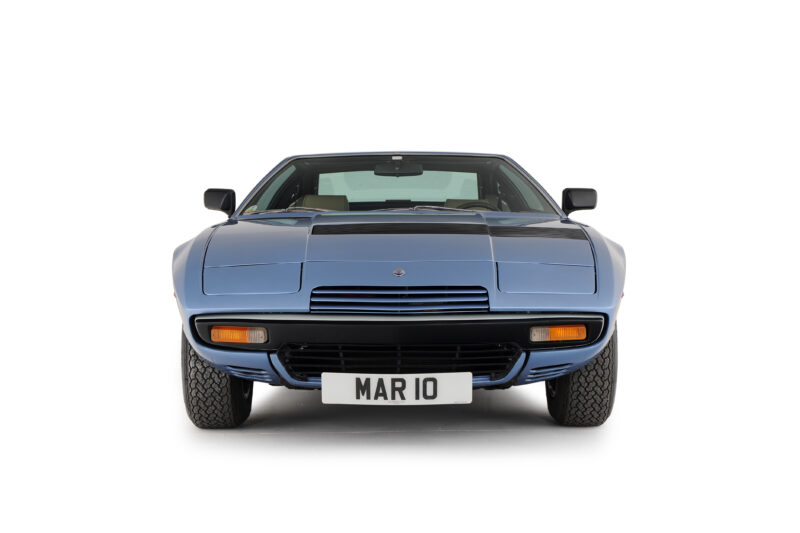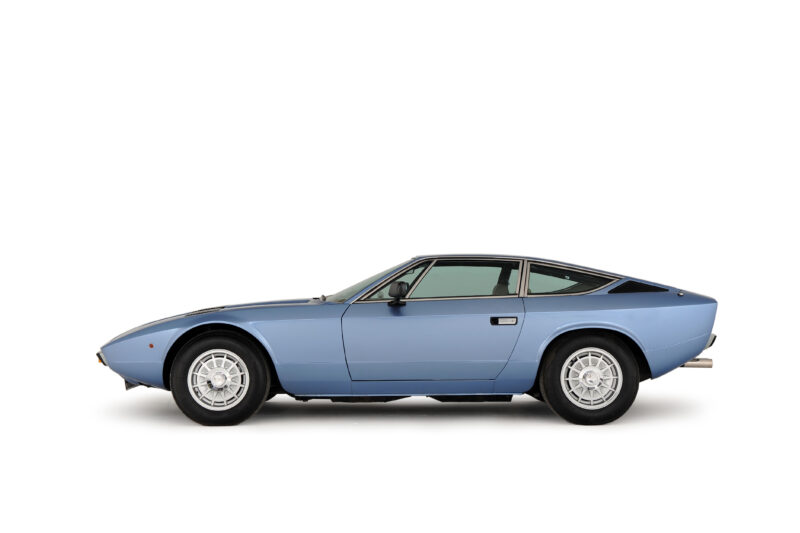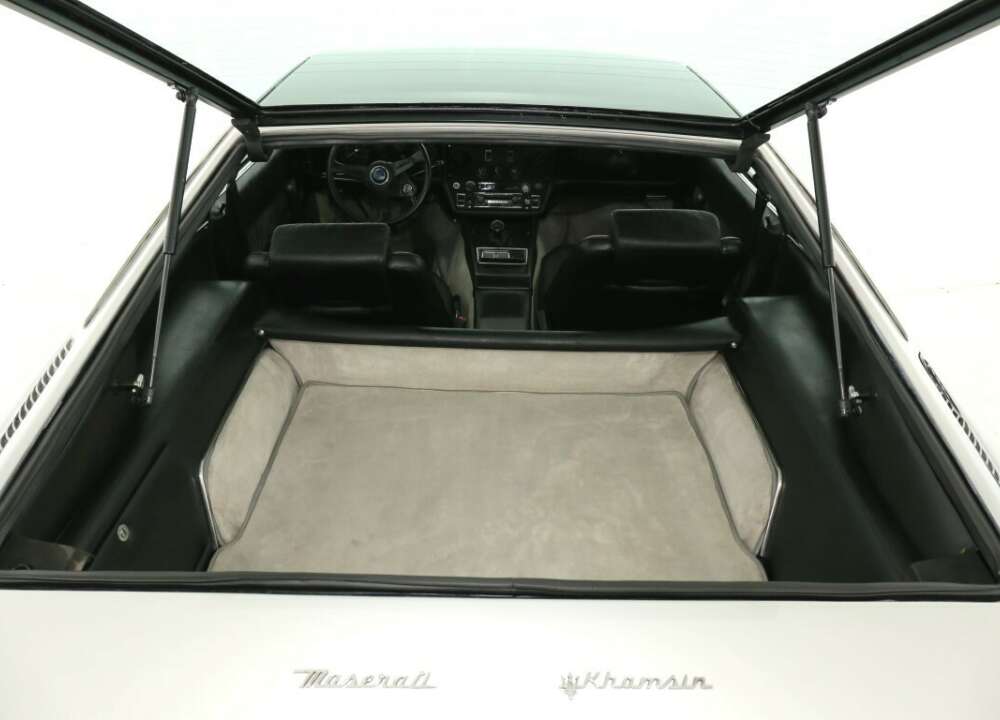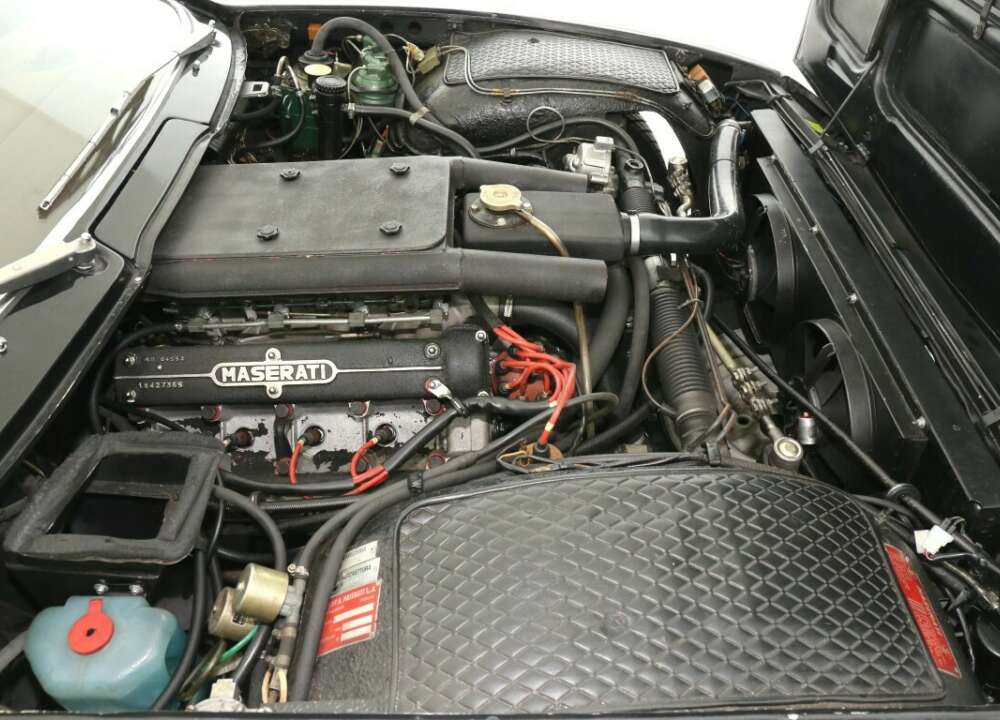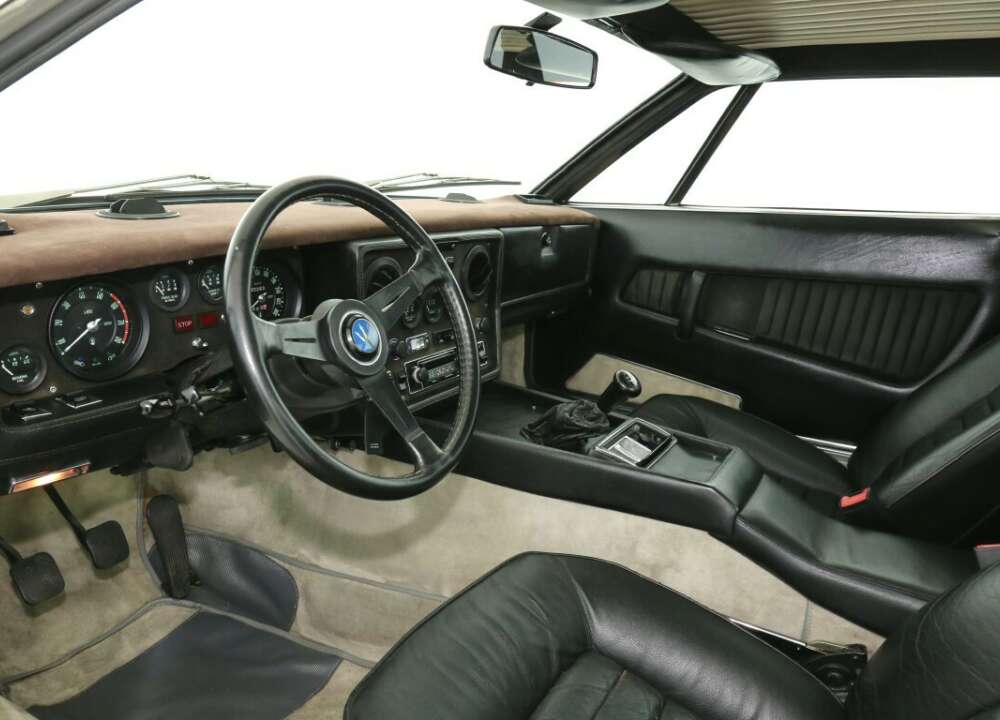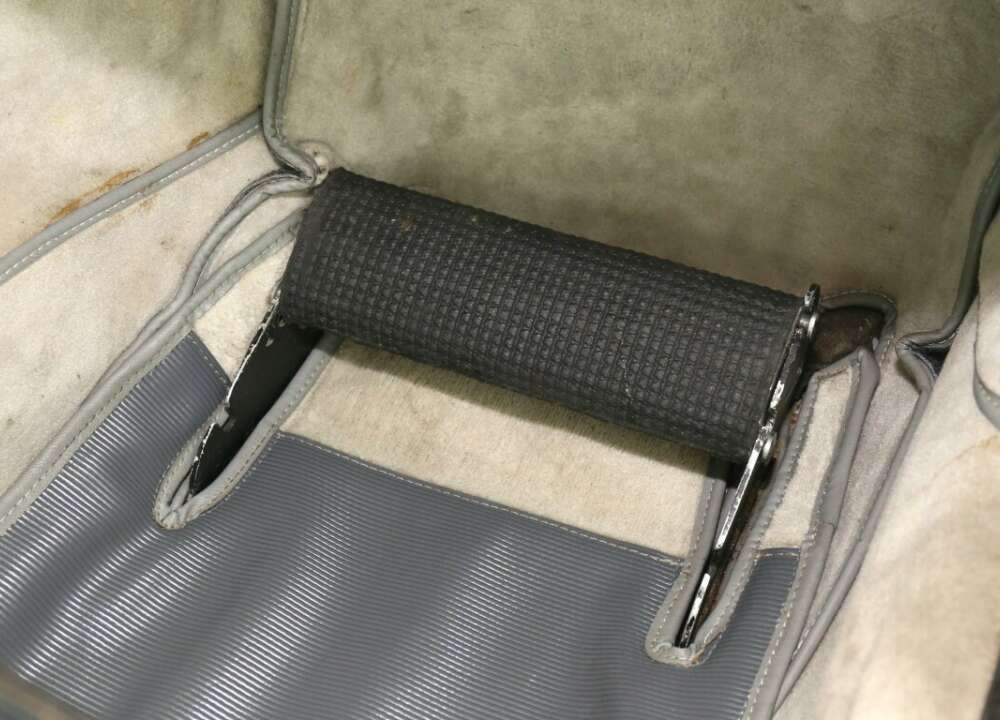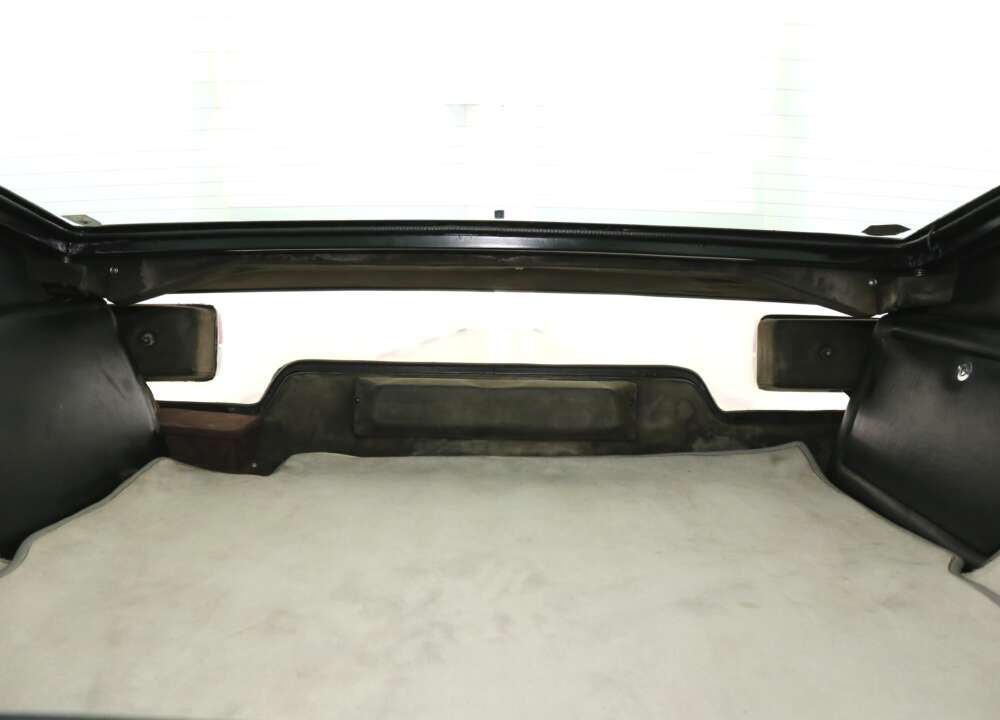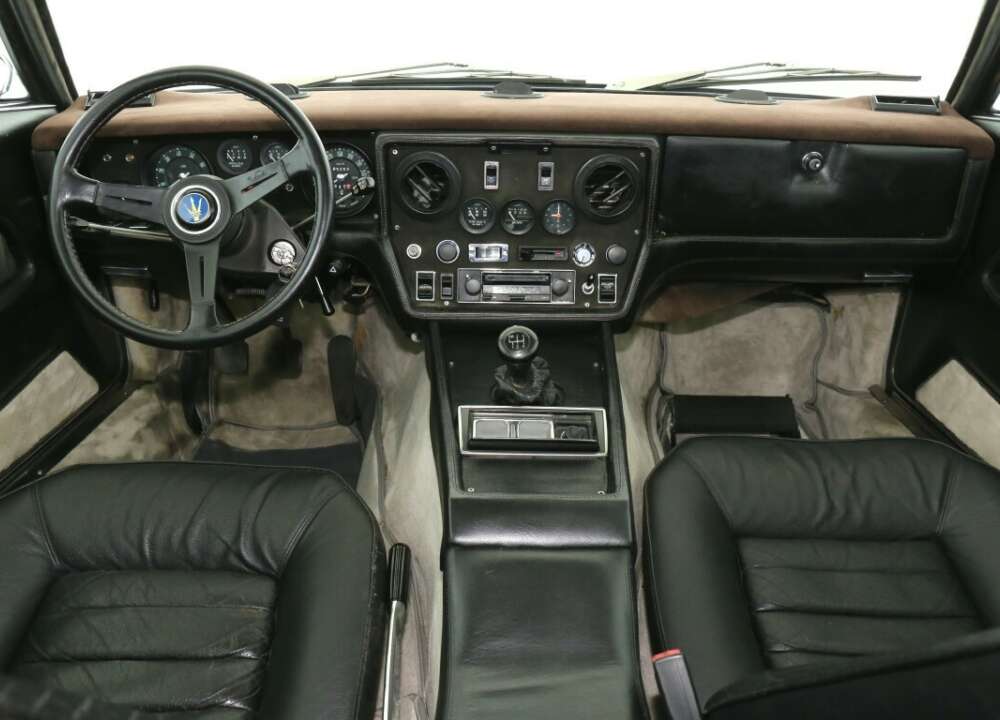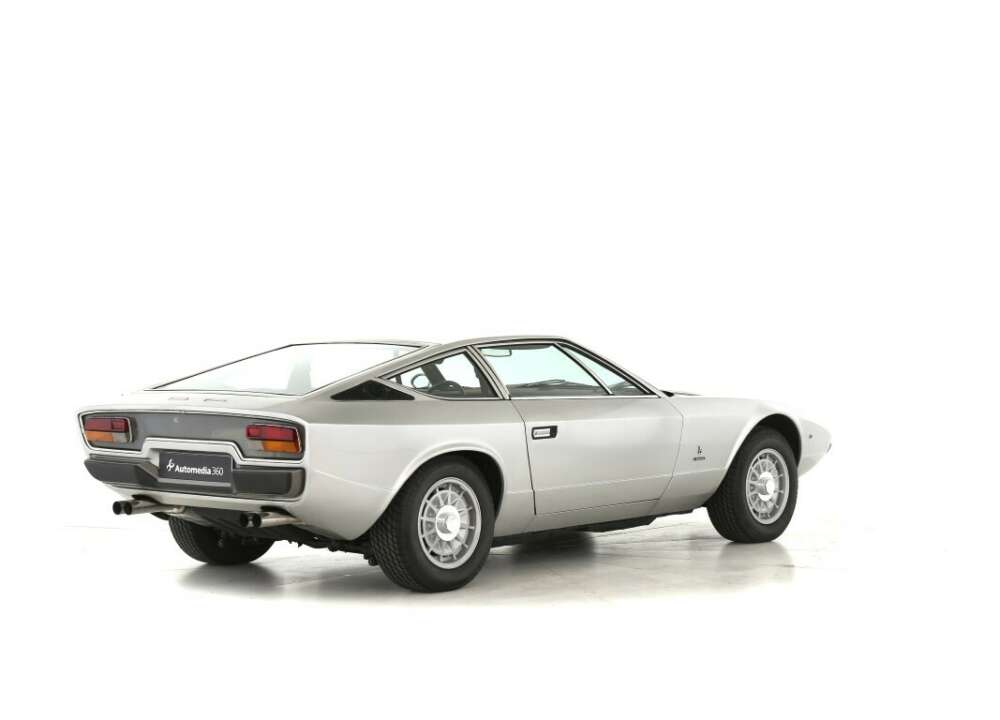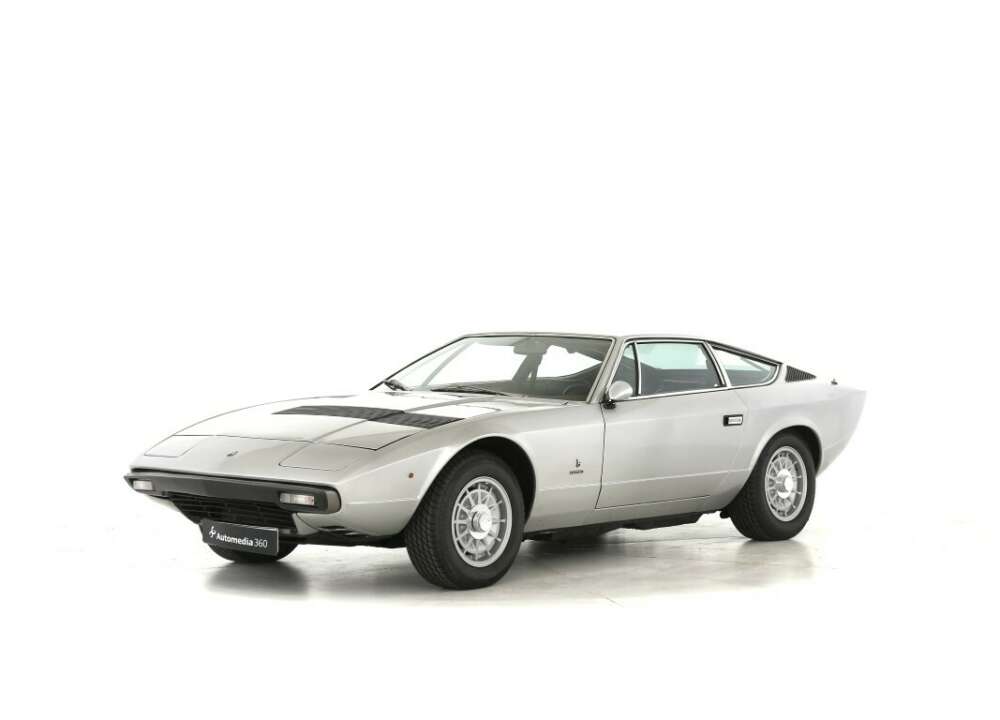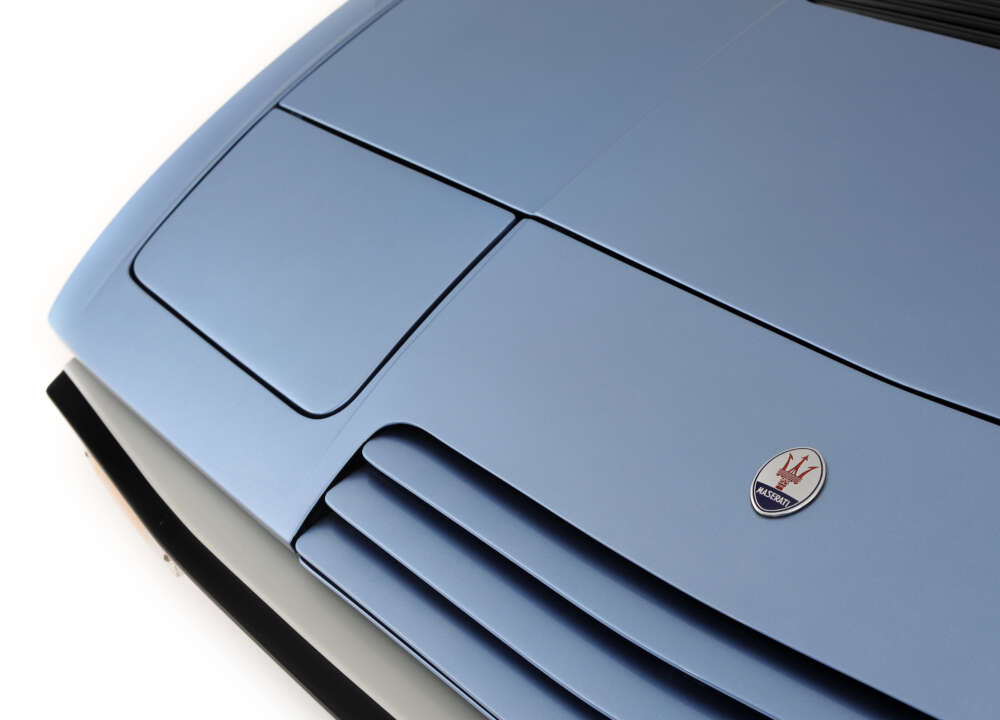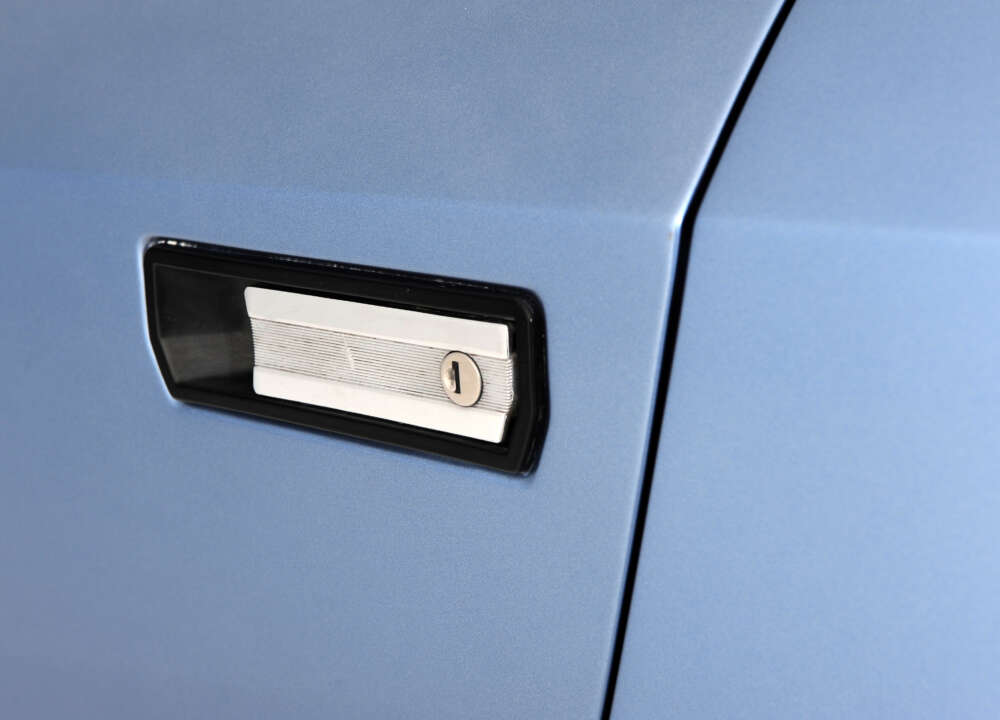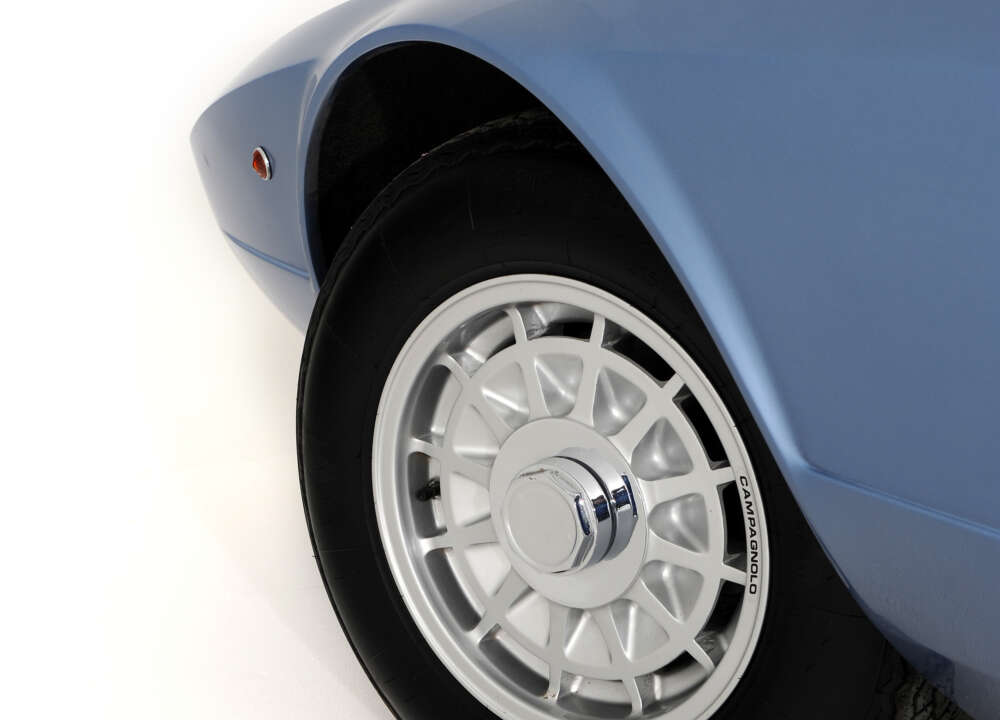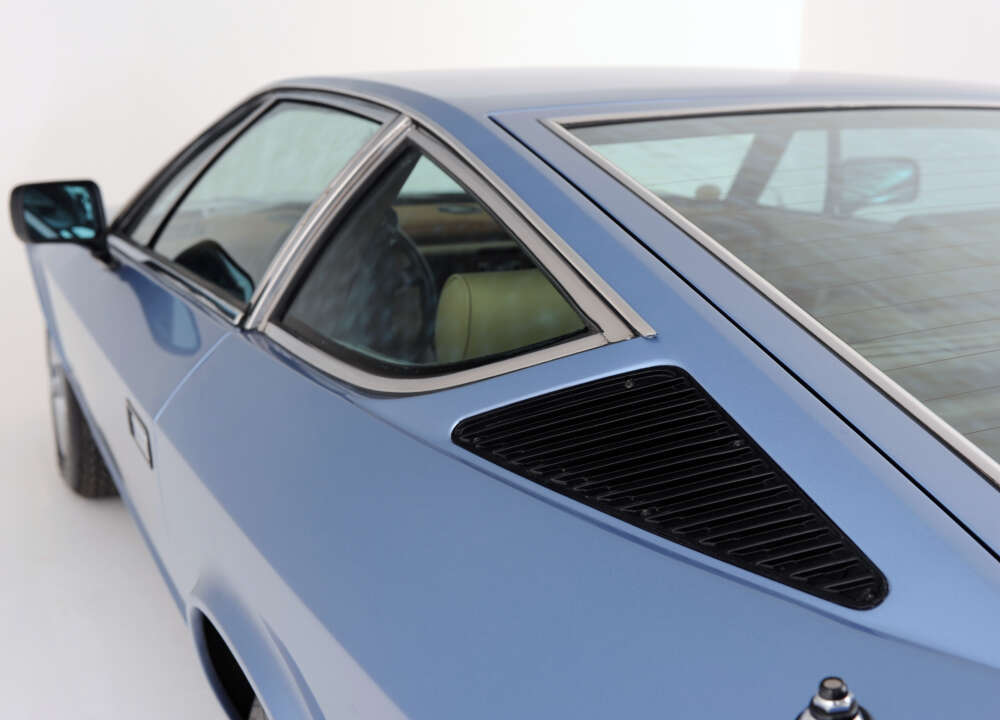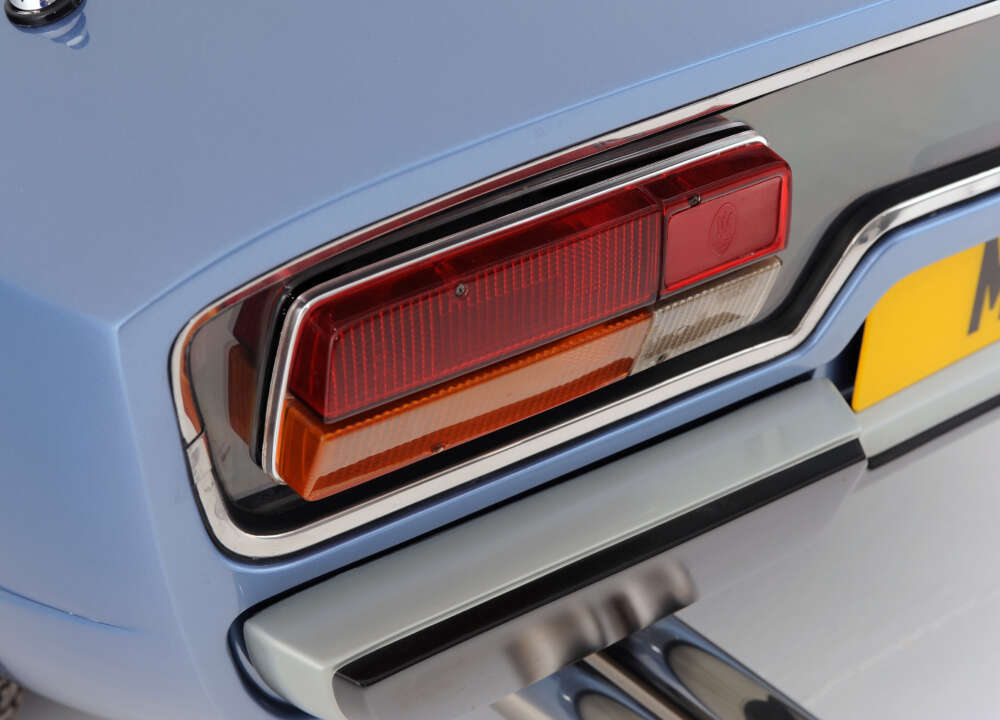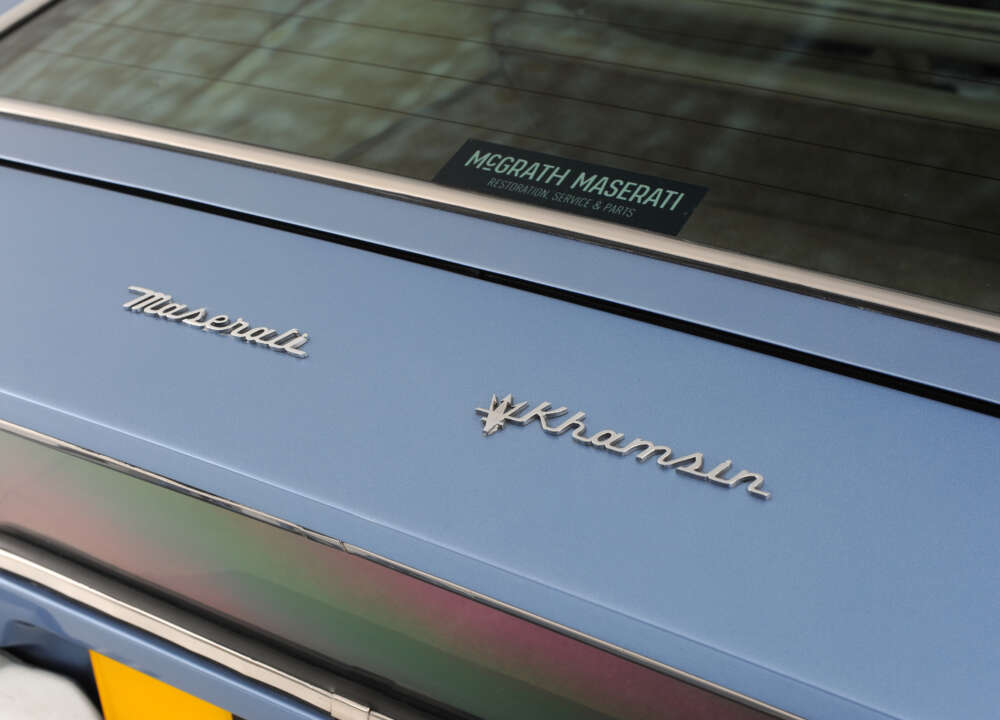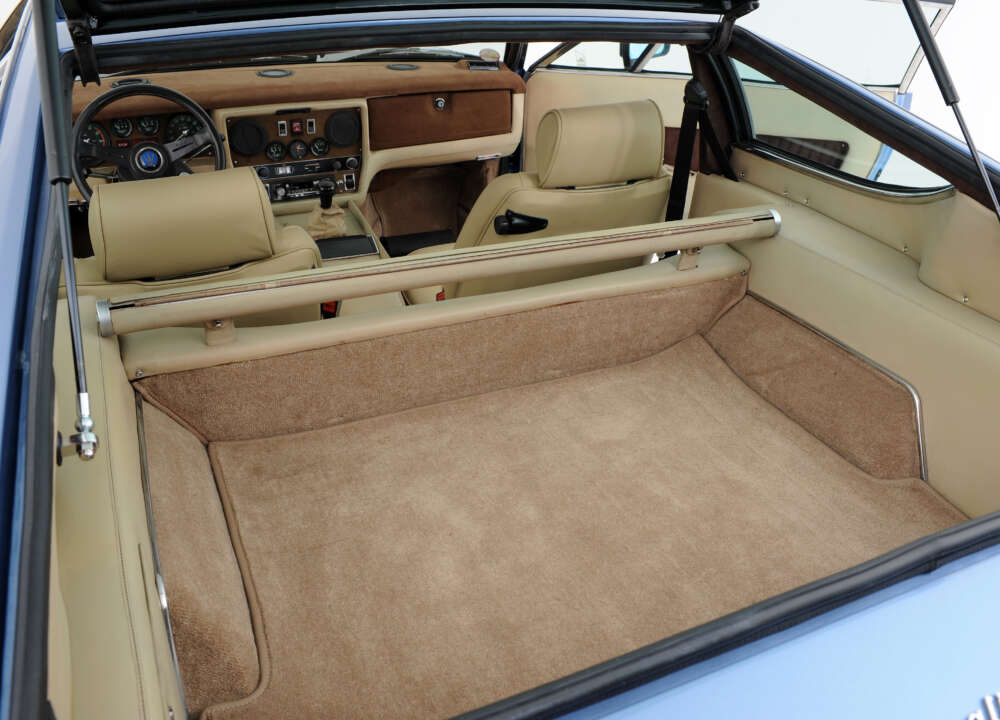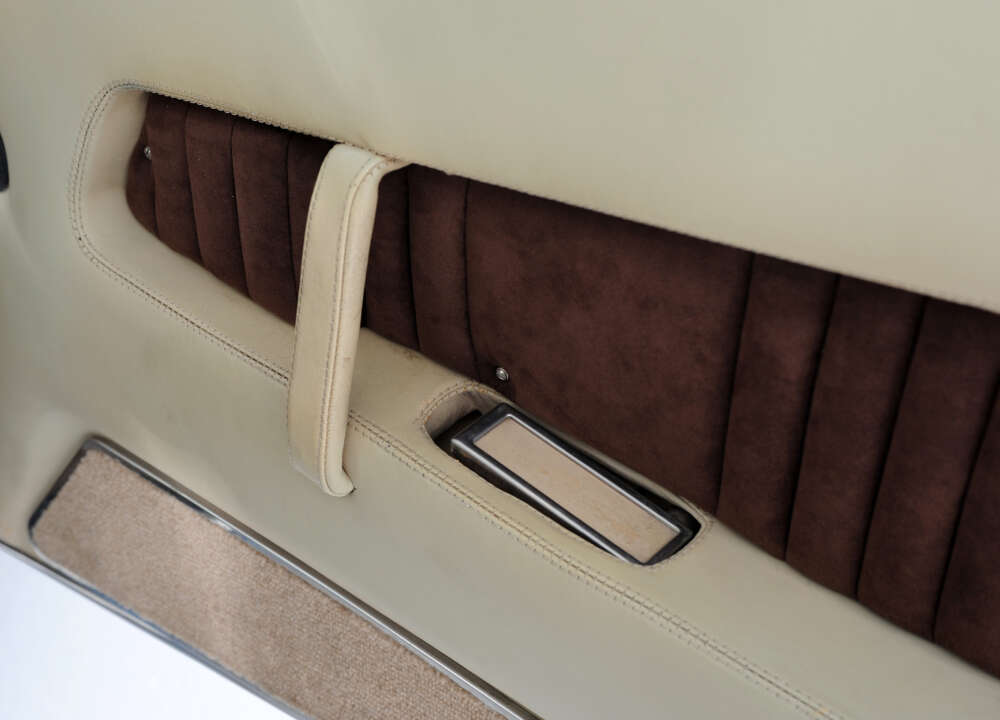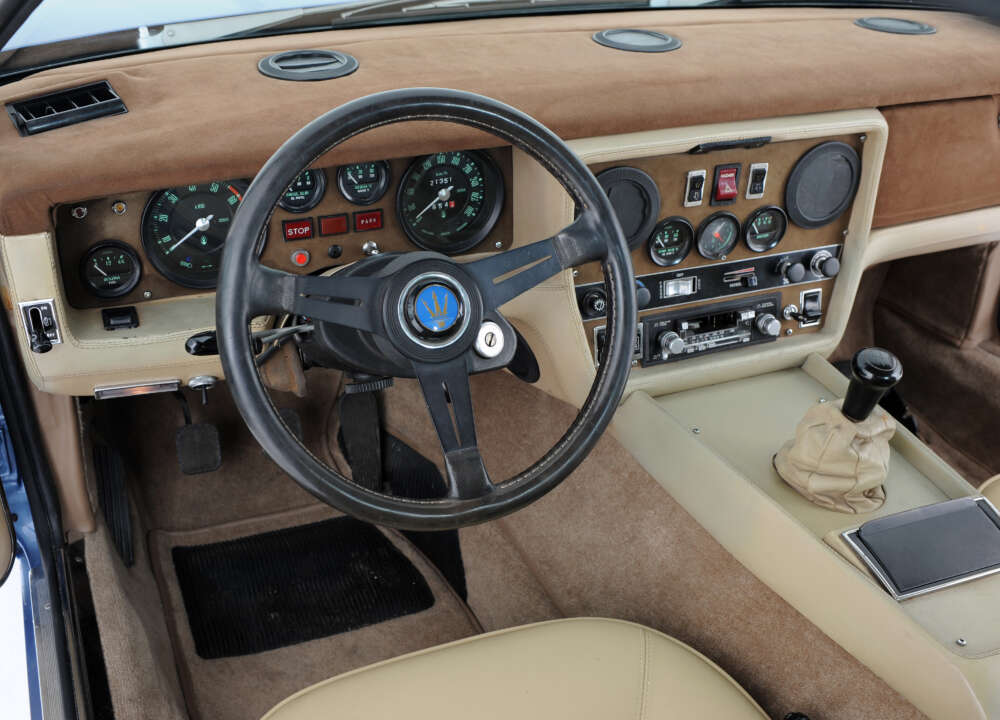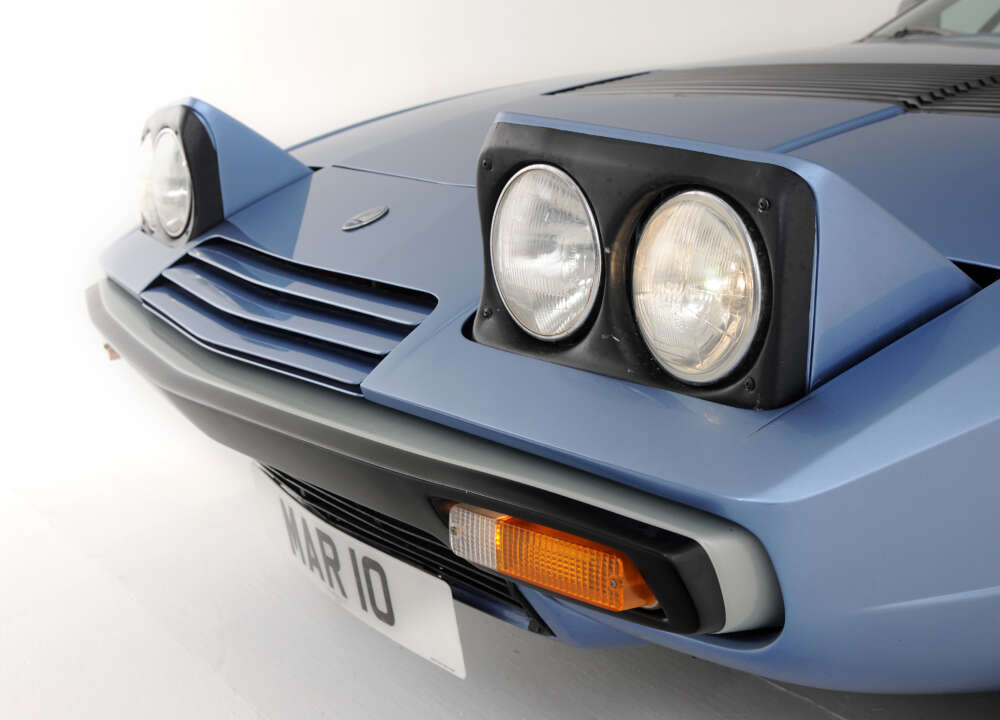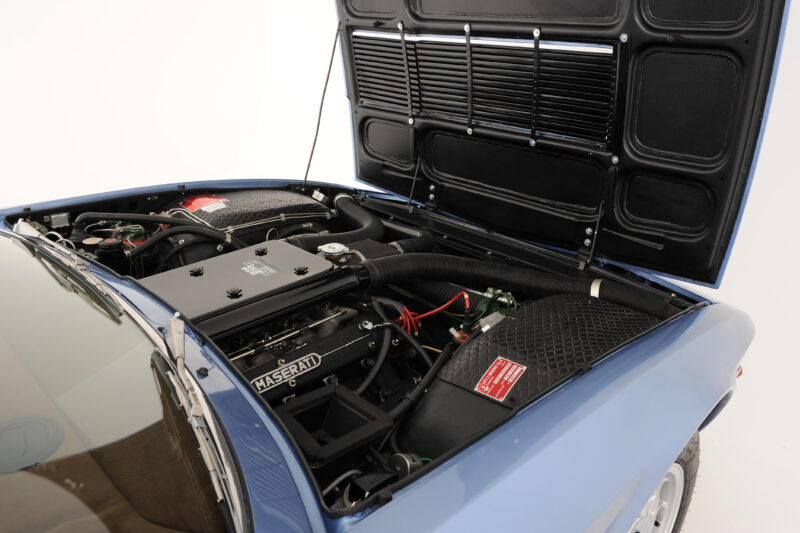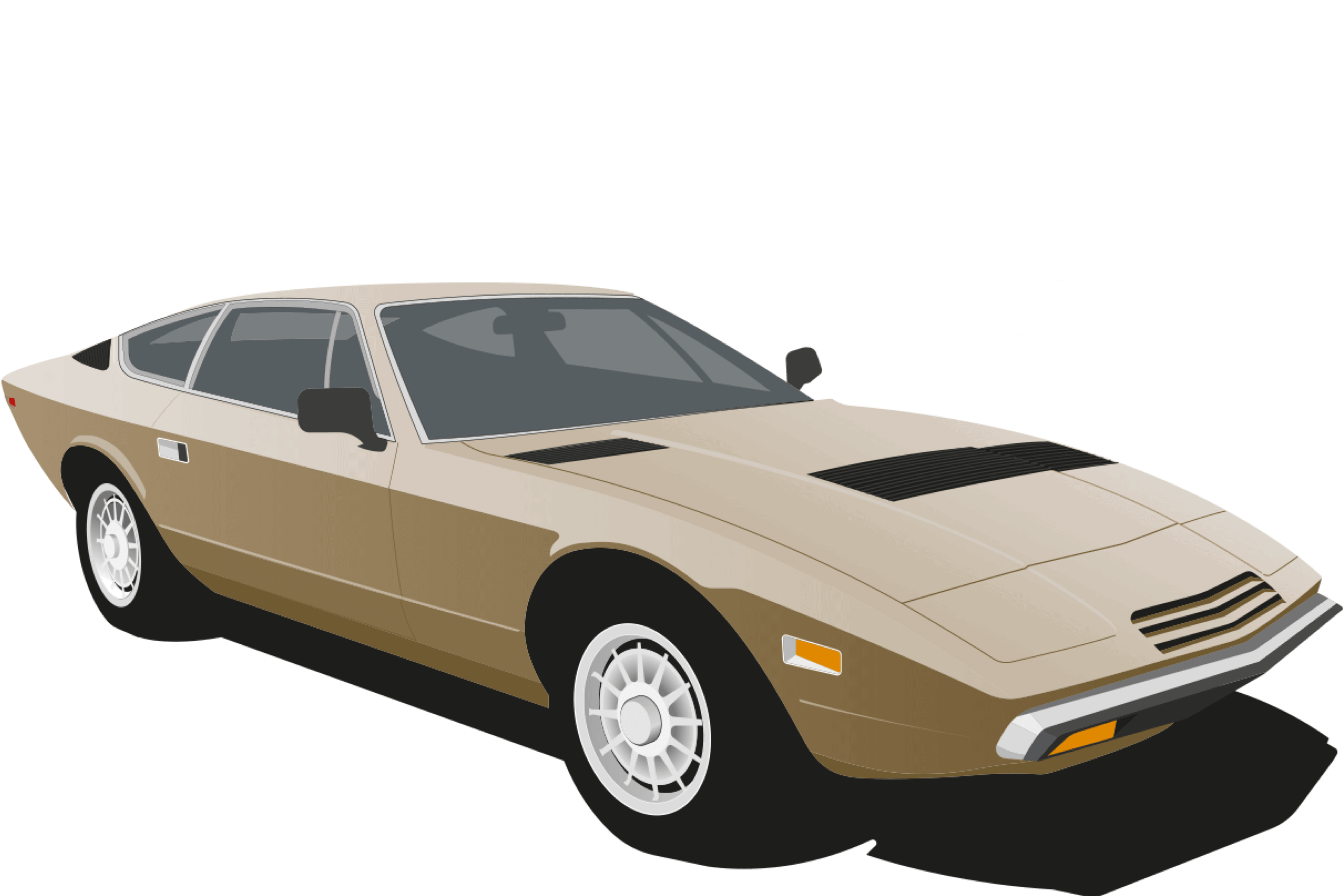
This accomplished grand tourer is a well-kept secret.
The Khamsin is quite simply the most refined, satisfying, competent grand tourer of its day. Its single flaw is to have been born just as the energy crisis of 1973 quadrupled fuel prices and introduced speed limits. It retains the charisma of the Ghibli SS along with the carburettors which make a noise as grand as any road car. But it comes with better handling, an almost perfect 50/50 weight balance per axle. It is very agile for its weight and a forgiving one when the limit is reached. The hydraulics are entirely reliable if serviced correctly and if the car is driven often enough. They transform the car. The steering is self-centring, very direct, and light at low speed then hardens as speed - not rpm - increases. You soon develop an exact fingertip technique which makes anything else seem primitive. Thanks to the hydraulics the clutch is light contrary to many sports GT cars which become a chore to drive in slow traffic. The brakes are potent and do not fade, even during a day at the race track. They are touch-sensitive with very little pedal travel.
All this takes some getting used to but once mastered, it is a revelation. It is a big-engined beast that handles like a pussycat with a sophistication decades in advance. It is incredibly comfortable to drive, tracks arrow-straight on the motorway at any speed, will be happy on the Autobahn at 230kph all day with bursts to 270. The gearing limits its top speed as it could go quite a bit higher. Its enormous torque makes it easy to rumble along in fourth gear most of the time. The visibility out of it is excellent, even to the rear thanks to that striking vertical rear glass with the rear lights seemingly suspended in mid-air. It was one of the five fastest kings of the road worldwide when new but far more usable than rear mid-engined rivals. The air conditioning is very advanced and efficient. The rear seats are for children or very nimble adults during short drives only. The trunk is quite spacious. The purest is the left-hand drive European version. 204 of them were made almost all five-speed manual, only a handful with automatic Borg-Warner transmission. Seventy-one right-hand drives were built while the USA and Canada version numbered 155 cars. These included 100 five-speed and 55 automatics.
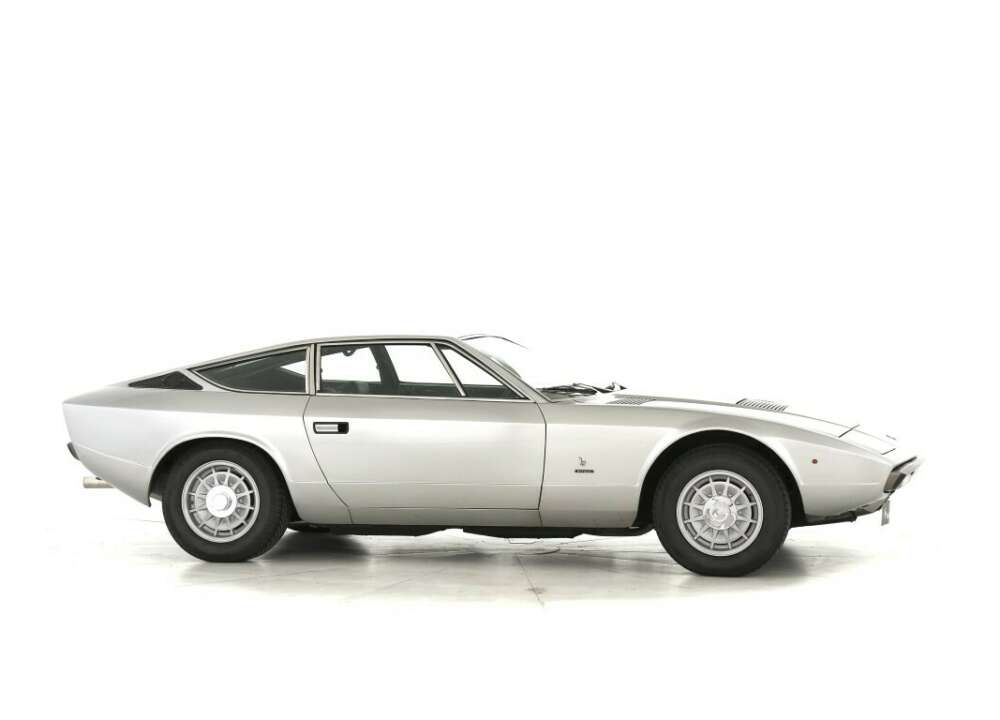
The USA version received a large low-hanging bumper, and the rear lights were relocated to the place where the Euro bumper was, beneath the glass. The front bumper was also enormous, forcing the relocation of the indicators underneath it. This created an awful look. There is a Euro bumper conversion kit to correct this. Many US Khamsins have been converted, and many have been imported back to Europe. They are in no way inferior to a Euro-market car. Due to the low US speed limits, they were fitted with a smaller differential ratio giving more acceleration, less top speed which is not so relevant nowadays. The best front-engined grand tourer of all time, like a great wine, kept secret? Quite probably.
Specifications
Front-engined with all-alloy 4,9-litre four-cam V8 with four twin-choke Weber carburettors, 320hp, 480 Nm of torque. The first year, 1973-74, version had a smooth nose; after that, a vented nose which improved airflow to the radiator. All USA cars have this. Contrary to popular belief the later cars are not fitted with detuned engines. Only the brochures were detuned out of political correctness as confirmed by Ermanno Cozza. USA cars have crisscrossing wipers, most European cars parallel wipers. There was some variation in seat type. A few later Euro cars have smooth noses. There is no mysterious reason: whatever was on the shelf when the cars were assembled was fitted. One Spyder exists, but it was created in Michigan, USA in 1976, not by the factory. One car was modified in Germany receiving a Kyalami-like nose. This had nothing to do with the factory. A few late cars had a shutter like retractable soft trunk cover. Very few came with bespoke luggage; only one car still has it. Ultimately, there were but a few variations. The company at the time first under Citroën then under de Tomaso, had other worries due to bad economic times. Still, the Khamsin was particularly well-born.
430 cars built between 1974 - 1982
Engine
V8, light-alloy block
4930 cc
Power output: 320 hp
Body
Two-door, 2+2 Coupé, monocoque
Designed by Bertone
Performance
280 kph
Competitors
Its opponents were the Ferrari 365GTC/4, the Aston Martin V8 Vantage, the very thirsty Jensen Interceptor, the Porsche 928. The latter was born after Ferdinand Piech showed his Ghibli to Porsche engineers. The Ferrari is the most comparable but much more expensive whatever the market’s mood. The Vantage is plush but handles like a couch dixit an English top journalist.
Valuation
For a long time, Khamsins were undervalued because they were rare and practically unknown, but values arose around 2010. In 2004, a car in good condition sold in Wisconsin for 21.000 USD. Same car sold in 2007 for 51.000 USD. In 2015 the car went to Holland for 120.000 euro. It was restored and in 2016 at a Paris Rétromobile auction bidding went to 210.000 euro. A massive increase in 12 years. The record price was 275.000 euro at auction July 2015 during the peak of the market, but in 2022, a good Euro Khamsin should be worth 160.000 euro. In the USA, where less than fifty remain they are less appreciated and hence valued lower, around 120.000 USD. In the RHD UK marketplace, it is between 110000 and £150.000.
We are aware that the valuation of this car is very subjective and depends on many criteria. That is why auctions are used as a barometer to sense where the market is moving. However, premium restored or preserved classic Maseratis change ownership through private sales (and seldom in an auction). As a result, rarely do we discover the price for an off-market transaction.
Persuasion
Their reputation as a complicated car is only real for those who use an inadequate mechanic or workshop. Proof: during their largest-ever gathering, KHAMSIN QUARANTA in 2012 27 Khamsins gathered from all over Europe. Three were trailered, so 24 of them drove an average of 1600kms that week. That is 38400kms. Only ONE car had a small issue, fixed by the side of the road. A Khamsin can be driven all day, London to Monaco for example, and the crew will arrive fresh, able to dance all night. That is not the case for many sports GT cars of that era which have heavy clutches and steering, are too noisy, exhaust the pilot and annoy the passenger.
Initial texts by Marc Sonnery.
Registry
The Maserati Khamsin Registry was started by Marc Sonnery in 2004 and now has data on over 350 of the 430 cars built. He is a journalist and author of many Maserati articles and two books. The data on the cars is not available online but Marc is always willing to share information he has on any given chassis number. He will quickly respond to any question you may have regarding individual Khamsins. You can contact him via http://www.maseratikhamsinregistry.net/.

